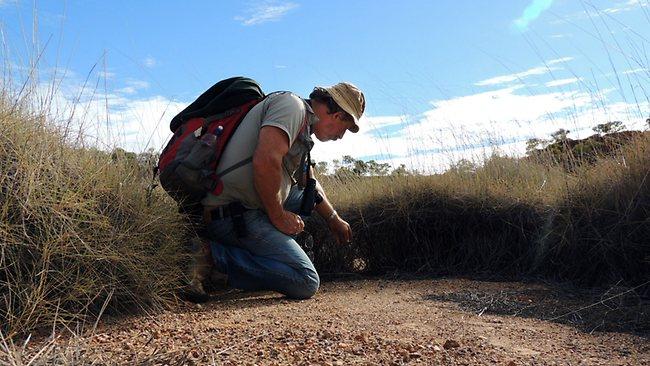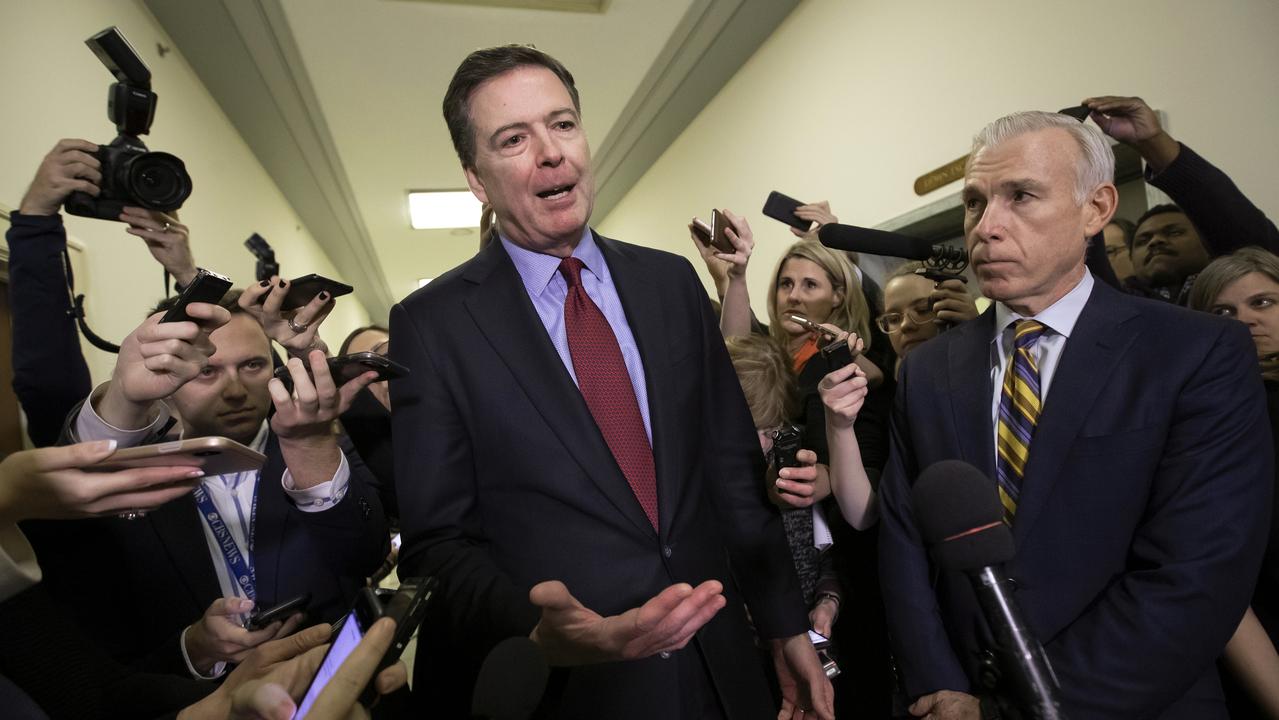Rare bird ruffling feathers
BUSHMAN and naturalist John Young has generated huge interest with his discovery of the night parrot in southwest Queensland.

IT bounces among spinifex clumps in the desert like a wound-up toy, puffs itself up to look like a green and gold echidna, and bangs its head on the ground when excited. The night parrot, one of the world's rarest and most enigmatic animals, has not disappointed.
Bushman and naturalist John Young has generated enormous interest with his discovery of the night parrot at an undisclosed location in southwest Queensland. A conference hall at the Queensland Museum in Brisbane this week was packed as Young revealed to the public the first photographs and video footage ever taken of a bird that has confounded experts for more than a century.
Where to now for this remarkable creature? Amid the excitement surrounding Young's extraordinary find - which involved him driving 325,000km and spending 17,000 hours in the desert over several years - debate is emerging about what should be done to seize an opportunity to protect a critically endangered species.
Young is not notifying state or federal authorities of the identity of the private grazing property where he found the birds. He insists that the conservation of the night parrot is his primary concern and he intends to raise at least $2 million so the property can be managed privately. Rights to his photographs and video footage are up for sale. However, bird experts are urging Young to back down and co-operate with government agencies.
Young photographed the bird in the general region where two dead night parrots were found 16 years apart - one near Boulia in 1990, the other in the Diamantina National Park, 200km away, in 2006. Other than those birds, the last confirmed report was a century ago when a night parrot was collected at Nichol Spring, Western Australia, in 1912.
A handful of sightings are the only other reports. Brisbane naturalist David Stewart saw a night parrot along the Canning Stock Route, Western Australia, in 1967. Scientist Shane Parker and tour operator Rex Ellis flushed four birds from camels in 1979 at Lake Perigundi, South Australia. Environmental consultants Rob Davies and Brenden Metcalf saw three birds at Minga Well, Western Australia, in 2005. Some authorities question one or more of these reports.
The spread of feral cats is a major factor in the demise of the species. It was once common around Alice Springs. In 1892, it was reported that "numerous" night parrots were killed by cats at the town's Old Telegraph Station.
Young was able to throw some light this week on how the bird has evaded attention for so long. It calls sporadically and softly. The parrots do not emerge from spinifex clumps in which they hide during the day to forage until well after sunset. They appear to have no need of water, defying expectations that they fly to watering holes at dusk. They do not flush from daytime roosts if disturbed and generally are as cryptic as it is possible to imagine.
Six weeks ago, Young lured a male night parrot into view with a tape recording of its distinctive whistle and captured his magical images. In 2008, he first heard the bird calling on the property near the Queensland-Northern Territory border where he was to later photograph it. Although he knew then that he had cornered the Holy Grail of the birding world, it was five long years before the proof was in the bag. Said Young this week: "I understand why nobody ever found one because it is so secretive. We were over the top of it most nights and it would not call." His recording of the call is the only one in existence. He does not intend to release the recording, although some in the birding community argue that its use across the parrot's once vast inland Australian distribution would help locate more parrots.
Young located a parrot's roosting site as well as a nest; he said he could hear the nestlings calling - proof of successful breeding. He sent parrot feathers he collected for DNA analysis to the Western Australian Museum. Nests are generally full of feathers but Young insists he did not disturb the nest. Young said in one interview this week that the feathers were collected from the roosting site, but in another interview he said they were "at the road side". Young says on his Facebook page that a female bird was sitting on the nest but he does not explain how he became aware of her presence; historical records show that night parrots build nests deep within large spinifex clumps that are not easily visible or accessible.
WA Museum senior vertebrates curator Ron Johnstone tells Inquirer: "John indicated there were feathers everywhere at the site. He says he's got a heap of feathers." Australia's leading authority on parrots, Joseph Forshaw, says he is puzzled at how Young was able to collect a substantial quantity of feathers from either a road verge or a roosting site.
Young is a controversial figure. He has admitted to colleagues that he collected clutches of eggs from the nests of rare birds over many years but insists that he stopped doing so long ago. In 1980, Young reported a discovery even more exciting than a night parrot. He claimed to have rediscovered the paradise parrot, the only bird believed to have become extinct on the Australian mainland, but visits by ornithologists failed to find any birds.
In the mid-1990s, Young claimed to have photographed a Coxen's fig-parrot, a tiny parrot on the verge of extinction, but no conclusive evidence emerged. In 2007, Young claimed another spectacular discovery when he said he had photographed a previously unknown species, the blue-browed fig-parrot. The claim was challenged by revelations in The Australian about doubts by experts concerning a photograph of Young's parrot published in The Courier-Mail.
In her acclaimed book, Glimpses of Paradise - The Quest for the Beautiful Parrakeet, zoologist and parrot expert Penny Olsen said Young had on several occasions "claimed a sensational find, shrouded in secrecy, which divided the birding community and ultimately came to nothing".
This time the evidence is incontestable, but divisions in the birding community have resurfaced. Melbourne photographer Geoff Jones suggested on wildlife online forum birding-aus that Young's critics would "grovel and eat humble pie"; Tasmanian birder Ian May said doubts about Young had been generated by "slurs" published by The Australian. Others countered that the night parrot find and Young's previous claimed discoveries should be regarded as unrelated.
When revealing his find exclusively to The Weekend Australian last week, Young addressed his critics publicly for the first time. He said he had lost the negative of the blue-browed fig-parrot photograph. However, the image was digital and one of a series. Young offered a different explanation about the photographs in a later interview: "I lightened them, darkened them, did my own sort of stuff and I was criticised and probably rightly so."
Young has locked government authorities out of his night parrot discovery, declaring this week: "I'd rather go to jail than tell anyone where I found it. The site is going to stay protected. I want to look after this thing at all cost."
Young believes government agencies would mismanage the property and that its whereabouts cannot be disclosed because it would be invaded by intrusive bird-watchers, threatening the survival of what is probably a tiny remnant population. Another concern may be egg-collectors; avicultural industry sources say a clutch of wild night parrot eggs could fetch as much as $1 million on overseas black markets.
Forshaw, who has written many books and scientific articles on parrots, says it is essential that Young co-operate with government authorities: "You need a cat reduction program, you've maybe got land acquisition, all manner of management issues. John won't have the resources. What happens if he gets run over by a bus? It all goes down the gurgler."


